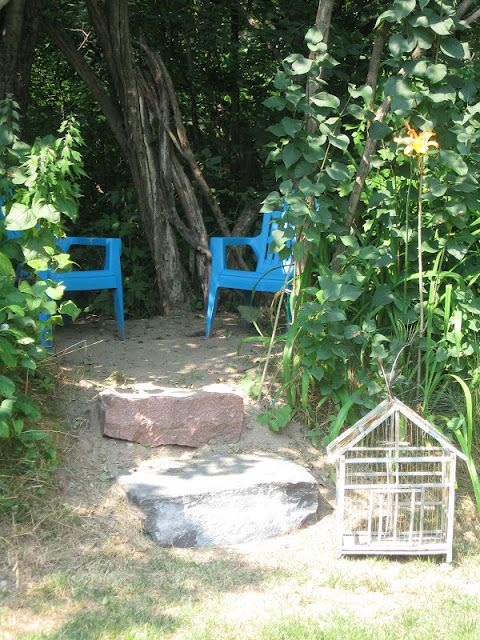In an era increasingly captivated by the digital world, the allure of the great outdoors holds profound importance for children’s development. Cultivating an environment where children can interact with nature can yield transformative benefits for their creativity, health, and social skills. This article will delve into the fascinating project of creating a natural outdoor playspace, exploring its myriad elements, advantages, design principles, and community implications.
When discussing natural outdoor playspaces, one might envision a variety of content: detailed descriptions of specific play features that invite exploration, comprehensive insights into the psychological and physical benefits of outdoor play, expert recommendations on materials and safety, and inspiring case studies from existing projects. The following sections will elucidate these facets, painting a vivid picture of what a natural playspace entails.
Natural outdoor playspaces harness the inherent beauty and complexity of nature to create engaging environments for children. Unlike traditional playgrounds adorned with metal slides and plastic equipment, natural playspaces integrate organic elements such as logs, rocks, plants, and water features. These areas are meticulously designed to foster imaginative play and encourage children to connect with their surroundings.
The diverse elements found in a natural playspace are catalysts for unstructured, explorative play. Children can climb over boulders, navigate through dense underbrush, or create miniature worlds using sticks and leaves. This type of play is intrinsically motivating—children are drawn to these spaces, and their engagement with nature stimulates creativity and enhances cognitive development.
One of the most compelling benefits of creating a natural outdoor playspace is its positive impact on physical health. Contemporary lifestyles often confine children to sedentary activities, leading to alarming rates of childhood obesity and associated health issues. Access to outdoor playscapes encourages physical activity naturally through climbing, running, and jumping, all of which are vital to developing gross motor skills. Moreover, exposure to sunlight promotes Vitamin D synthesis, essential for healthy development.
Equally significant is the psychological benefit derived from unstructured play in natural settings. When children engage with their environment, they experience reduced anxiety and enhanced mood. Studies indicate that play in natural environments fosters resilience and emotional well-being. There is a profound sense of freedom when exploring outdoors, allowing children to fabricate their narratives and solutions. This autonomy cultivates problem-solving skills and fosters confidence.
Designing a natural playspace involves a thoughtful approach that prioritizes sensory engagement, educational opportunities, and inclusivity. A successful natural playspace should cater to a range of ages and abilities. Incorporating features like gentle slopes, sandboxes, and water play areas invites children to engage at their own comfort levels. The careful placement of sensory gardens can entice children through delightful aromas, colors, and textures, stimulating the senses and encouraging discovery.
Integrating diverse plant species and natural materials into the design does more than enhance play; it serves educational purposes as well. Children can learn about local ecosystems, engage in hands-on science, and develop an appreciation for biodiversity. Educational signage can illustrate the importance of environmental stewardship, fostering a sense of responsibility towards nature from an early age.
A pivotal aspect of creating a natural playspace is community involvement. Engaging local families, educators, and volunteers cultivates a sense of ownership and pride. Community workshops can facilitate the sharing of ideas and concerns, ensuring that the playspace is responsive to the needs of those it serves. Such collaboration not only enriches the design process but also strengthens community bonds.
Once the playspace is established, ongoing maintenance stands paramount. Unlike conventional playgrounds that require frequent updates due to damage, natural playspaces evolve organically. Maintenance involves ensuring safety while allowing nature to thrive. This may include periodic vegetation management, keeping pathways clear, and assessing play features to prevent hazards. It is crucial to strike a balance between nurturing the natural environment and providing a safe space for children to play.
In summary, a natural outdoor playspace is an invaluable asset to children and the broader community. Its multifaceted benefits—ranging from enhancing physical and mental well-being to fostering creativity and lifelong learning—cannot be overstated. As communities seek ways to enrich childhood experiences, embracing the concept of natural playspaces can bridge the gap between children and nature. Through collaborative effort and thoughtful design, we can create environments where children thrive, develop critical life skills, and build memories that resonate for years to come.
Embracing this approach not only fosters healthier children but also cultivates a deeper connection between our younger generations and the environment. It’s a project worth pursuing, advocating for what is often overlooked: the pure joy and developmental necessity of play. In a world dominated by screens, a natural outdoor playspace beckons children to rediscover the beauty and boundlessness of the natural world.









Leave a Comment